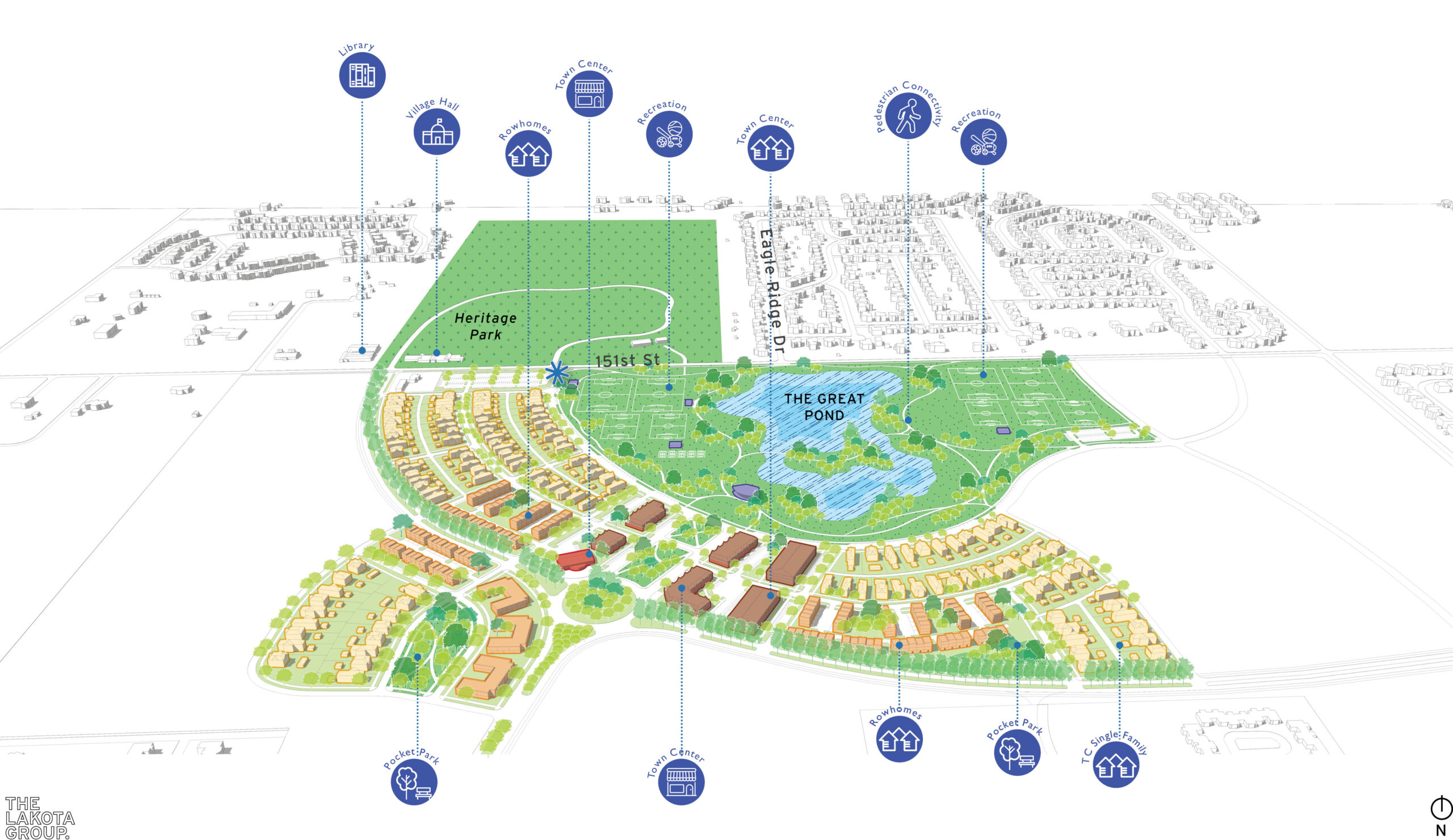By Lauren King | April 29, 2024
Homer Glen, a southwest Chicago suburb, has always wanted a town center – a gathering place with a small-town, downtown feel. Homer Glen evolved differently from many of its neighbors, being a rural community that incorporated as a village only in 2001. It didn’t develop on a commuter rail line and it lacked a traditional downtown.
The idea of a town center had a long history, beginning with the village’s first comprehensive plan, in 2005, where a town center was a central idea. Since then, informal discussions have continued from time and, on a couple of occasions, developers have brought forward plans for mixed-use centers, though none were built.
Historically, downtowns evolved organically over time. They included a variety of uses and they grew as the community grew around them. New town centers typically adopt some of the planning principles of historic town centers: they are compact and walkable, and they contain a mix of uses in and around their cores, including retail and other commercial activities, housing, civic spaces, and institutional and religious buildings.
The Village could have issued a request for proposals to the development community and hoped they would receive beautiful responses. Instead, Village leaders decided to flip the typical process: Rather than waiting for a developer to propose his or her concepts, the Village would put forward a community-driven vision and then ask developers to use it as their guide.
Homer Glen engaged The Lakota Group to help the community envision what a town center could look like. It had to be not just attractive but economically viable. The result had to satisfy both community wishes and market realities.
Being a semi-rural community, compact neighborhoods are not the customary land-use form. But walkability and a mix of commercial and residential uses requires a certain scale and relative density. To help inform our community conversations, we looked at a range of nearby downtowns and facilitated conversations to understand what residents liked and didn’t like about those places. We called these other downtowns “reference communities” and they served as conversation starters to help residents think through their priorities and an achievable framework.
Through a series of workshops, interviews, surveys, market assessment, and an evaluation of eight potential locations, we designed four Town Center Framework Concepts, all centered across from the Village Hall and connected to the anchor Heritage Park. The designs are both aspirational and a reflection of the balance of choices that all communities must make.
Homer Glen can now determine how it wishes to move forward, having the tools and the data to work collaboratively with potential developers and achieve the kind of welcoming, walkable, vibrant, and beautiful hometown downtown the community wants.

